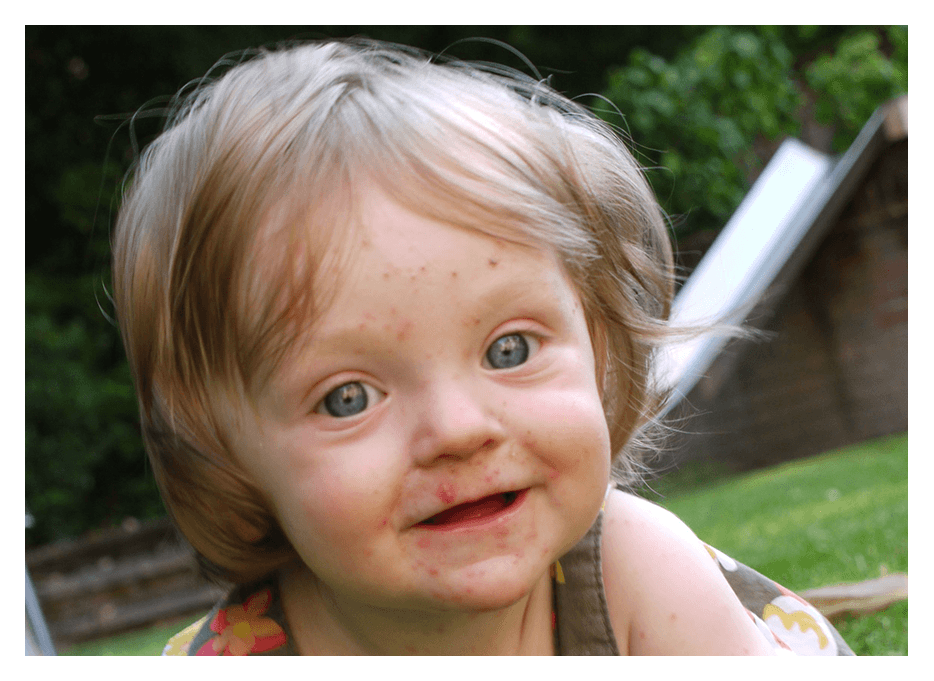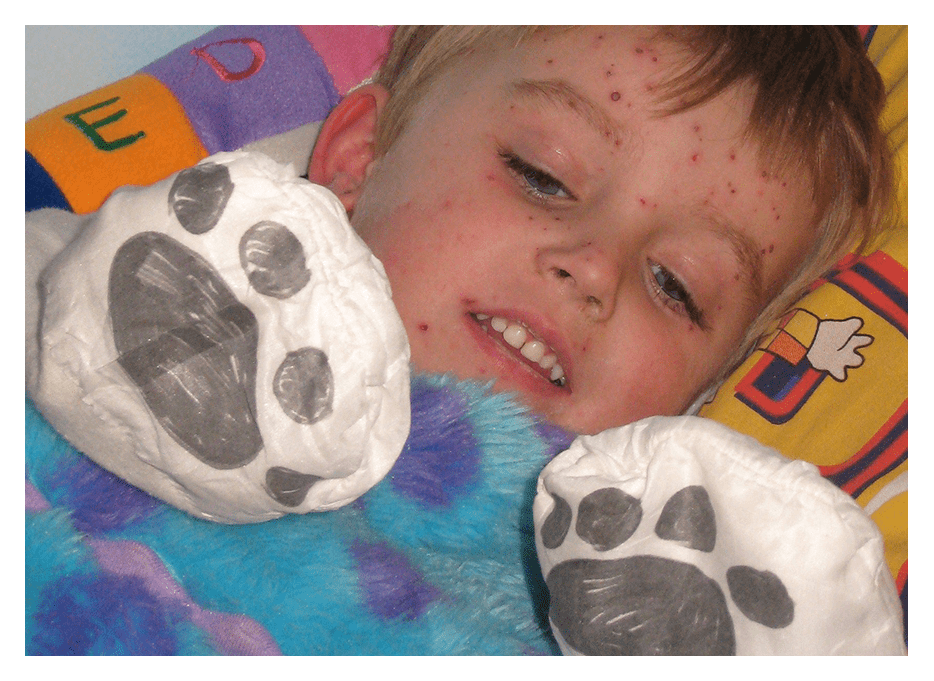Chicken Pox
Chicken pox can be incredibly itchy but to avoid future scarring it’s really important not to scratch the spots. ScratchSleeves minimise the risk of scarring caused by scratching and subsequent infections.
What Chicken Pox Looks Like

The most commonly recognised symptom of chicken pox is the angry red spots that can cover the entire body. However, for a couple of days before the rash appears children are typically under the weather, off their food and generally unhappy and grumpy.
When they do appear, the spots are normally in clusters which can be anywhere on the body: inside the ears or mouth, on the palms and soles and even inside the nappy area. Although the spots start small, within 12–24 hours they will grow and develop into a blister. It’s at this point that they become intensely itchy.
Over the next few days, the fluid in the blisters will go cloudy and they will start to dry out and scabs will form. New spots can keep appearing in waves for 3 to 5 days, so different clusters of spots may be at different stages of blistering or drying out.
Stop Kids Scratching Chicken Pox Spots
It’s important not to scratch chicken pox spots in order to minimise the risk of infection and to avoid future scarring. Most chickenpox scars are the result of bacterial infection caused by scratching.
One way to stop the scratches is to keep fingers nails clean and short, however, it may also be necessary to cover the hands of children who are too young to understand that they shouldn’t scratch or those children who scratch their spots while they are sleeping.
ScratchSleeves’ unique double-layer mitts minimise the risk of scratching, while the cool silk outer mitts is calming on the skin. The loose-fitting sleeve design avoids irritation of any chicken pox on the hands and wrists that can occur when wearing conventional scratch mitts (or socks over the hands). See more on how ScratchSleeves work and what parents have told us about their experience of ScratchSleeves and chicken pox.

You can also soothe the itch with cooling foams and gels. Here at ScratchSleeves, we got on best with PoxClin foam for our two kids as it doesn’t drag on super-sensitive skin when applied. To calm really intense itching, children’s Piriton (which contains chlorphenamine) is available from your GP or over the counter from the pharmacy.
Other Things You Can Do
- Painkillers – If your child is in pain or has a high temperature, you can give them children’s paracetamol. Never give aspirin or ibuprofen to anyone with chicken pox or suspected chickenpox – in rare cases, this can result in serious complications
- Cool clothing – If your kid has a temperature or if their skin is sore, dress them appropriately. Loose-fitting, cotton fabrics are best and will help stop the skin from becoming sore and irritated. ScratchSleeves are designed with sensitive skin in mind: they are made of natural fibres with a loose fit, and the stretchy fabric ensures that the wearer can move comfortably. Button-up tops, rather than over-the-head ones, are kinder on sore faces and scalps
- Keep hydrated – It is important for kids with chickenpox to drink plenty of water to avoid dehydration. Ice lollies are a good way of getting fluids into children; they also help to soothe a sore mouth that has chicken pox spots in it. Smooth foods with plenty of fluids in them are often easier on sore mouths: yoghurts, tinned spaghetti shapes and thick soups went down well when our kids had chicken pox. Weaning babies may need to step back to smoother, runnier foods for a while
- Encourage the skin to heal – the shadows left by chicken pox spots typically fade and disappear over 12-18 months. You can encourage healing by protecting chickenpox marks from the sun; using vitamin E rich creams like cocoa butter; and with a diet rich in green leafy vegetables, nuts and seeds which supply both vitamin E and omega oils
More information
Need more information? This is a good place to start: https://www.nhs.uk/conditions/chickenpox/

Quick buy



